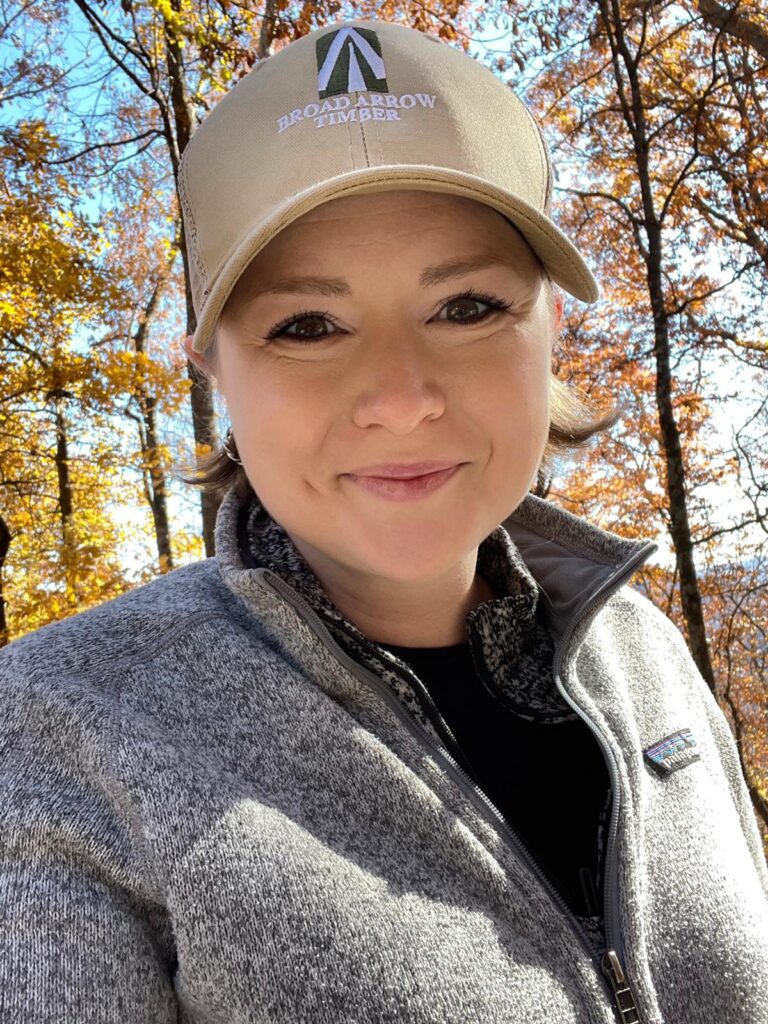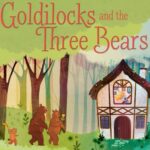
Name: MaryKate Bullen
Title: Director of Sustainability and ESG
Company: Forest Investment Associates
Role: MaryKate Bullen leads sustainability and environmental, social, and governance (ESG) programs for Forest Investment Associates (FIA), working across the business to identify opportunities to preserve and create value for FIA and throughout its clients’ portfolios. She chairs the company’s cross functional ESG Committee and is part of the investment management team, bringing a focus on ESG strategy and responsible investment engagement to FIA’s management approach. MaryKate’s career has focused on development and implementation of innovative approaches to sustainable investment in forestry, carbon markets, and conservation.
Women in Forest Investment
Forest investment as a professional field of forestry has come a long way when compared to its Timberland investment roots. Regular readers of the ForestLink blog may be familiar with my views on why we should move from a Timberland perspective to a broader notion of Forestry. This week’s interviewee raises yet another aspect of that conversation, as we seek to build a broader and more inclusive forest sector. The origins of timberland investment space have primarily been comprised of foresters, forest economists, and investment bankers – by and large, male dominated professions. Today, the field is starting to look much different.
In this latest article on my series dedicated to women of authority in the woods, I speak with MaryKate Bullen; a thought leader, and trailblazer in redefining the forest investment asset class, to represent its full value. MaryKate is paving the way for the future of forest investment, as exemplified through an industry-first TCFD aligned climate risk disclosure report for the forestry asset class, commended by Environmental Finance. She is also an advocate for diversity and inclusion across all its many faces, of which achieving gender equality is but one piece of the puzzle.
One of key takeaways from my talk with MaryKate was the need to engage more male allies. To build better empathy and rapport for more diverse experiences in the workplace, sometimes we have to open up, share, and even educate a bit. They simply don’t know what it’s like to be a woman. So, for the male readers out there – I encourage you to speak openly with your female colleagues about these issues, and for the women, embrace the opportunity to speak up.
Now, onto my discussion with MaryKate – I’m sure you’ll both resonate with her experience and learn something too!
It all started with Chimpanzees…
I asked MaryKate how her career evolved from university to where it is today, and she reflected that since a young girl, she looked up to the conservation work of Jane Goodall, directing the course of her studies. She pursued anthropology, biology and ecology, and found herself doing research in the Peruvian Amazon (I have a similar story here) – where she was introduced to the concepts of market-based mechanisms in forestry.
MaryKate: Fortunately, this led to early on meeting a woman named Marisa Hamsik, who was opening a new office in San Francisco for New Forests, at the time a small asset management company who sourced and managed forestry investments for other investors and that was trying to grow an advisory services program on environmental markets. I asked for a job, and she welcomed me in. That opened a door that led to nearly 13 years with New Forests. A big turning point was in 2011, when I moved to Sydney to work out of the head office for a secondment. I was a Senior Analyst at the time, but was tasked with running the company’s sustainability, research, and communications programs. This was a huge amount of work across varied topics, but it fit well with my preference for analytical thinking, orientation to detail, and finding ways to use stories and data to inspire others to love – or at least enjoy investing in – sustainable forestry, too.
Over time, I came to really specialize in the ESG and the impact functions of my role, working up to Director level and being responsible for designing and launching some truly leading impact frameworks, innovative financial products, and thought leadership. I feel that I hit my stride when I was able to work on challenging projects with cross-functional groups.
The double-whammy of being young and female
I asked MaryKate if she ever had a gender-related situation that affected her personally within her career, and separately if she ever felt a lack of respect due to gender. Though separate questions, I believe her responses to be inter-related. She described attending one of her first international investment conferences, where her excitement to be networking among peers across a broad spectrum of respectable companies turned sour. At an evening networking event, she was speaking to a man in a senior ESG role, who appeared to be engaging in professional dialogue and introducing her to other colleagues over the course of the evening, ultimately at the end of the night, he propositioned her.
MaryKate: The incident not only ruined the evening but dampened my experience through the rest of the conference. I found myself second guessing who I spoke with and what I was doing. I’ve since learned that of course, I didn’t need to be second guessing myself and that unfortunately this sort of experience is not that uncommon.
Related to this experience of MaryKate’s, are her thoughts on respect and credibility, where she also reflects on the earlier stages of her career.
MaryKate: I think the double whammy of being young and female was at times a challenge, where your credentials are not assumed when you walk in the door in the same way they might be with someone older, or with a man in general. This was something on my mind quite often in my late 20s and into my early 30s. I had been fortunate to have a CEO who made it clear he trusted me and that he believed in my skill set, vision, and values. However, when I went outside the company, I was often not prepared to be the youngest in the room and sometimes didn’t know how best to act when on my own, without the benefit of another person knowing my position or title. They don’t hand out buttons that say, “this lady knows what she is doing.” And I never wanted to be a person who entered a room feeling I had to prove myself, but inevitably those situations arose. It’s really important to me to be authentic, and I think my work has benefited as I have gained confidence in owning my own style of interaction and engagement. I lean into my strengths, which include sharing my enthusiasm for the work and using both stories and data to help people join me in seeing forestry as a sustainable investment solution. When I can do that, I think gender and age become less important – or more even an advantage.
The Work-horse trap’s silver lining
We discussed career opportunities or lost opportunities due to gender, and MaryKate shed-light on her experience in the “workhorse” trap, common for high-achieving women. Whereby Type-A women have a tendency of doing it all rather than asking for help. In MaryKate’s case, she’s aware this led her to ultimate burnout in a former role, but at the same time, she’s grateful for the rapid professional growth it granted her.
MaryKate: I was known for delivery and not dropping the ball, which meant that a lot of diverse tasks were thrown my way. No one needed to allocate me more resources, because I made the business case clear: I would get things done and I would take the lumps along the way. So, while this was in many ways one of the most disappointing aspects of my career journey, leaving me tired and frustrated, I also think there was a true benefit. I was given tremendous exposure to all facets of a forestry investment business and worked with many members of a talented team. I learned a lot through this work, launching opportunities for me to find my niche in sustainable forestry investment while understanding the big picture.
Breaking the flannelled-logger image of forestry
MaryKate is an excellent communicator. If you have seen any of her reports or writing, you would agree. I explained my frustration with the general image of commercial forestry, and how our industry struggles to communicate its importance (economic, social, environmental, climate). I asked MaryKate how she thinks we can improve this, and does she think gender has anything to do with it.
MaryKate: Forestry is an industry that already delivers significant positive impacts to the environment and society, and yet almost without exception all little kids learn that cutting down a tree is a bad thing. I would argue most of them never learn differently. This is a real problem!
Yes, I see gender as playing a part here, but mostly in the already outdated stereotypes that don’t reflect the people we have working in the industry and the jobs they do, including forest stewardship. The general public doesn’t have a strong understanding of what a “forester” does. They don’t have a chance to hear how we put science and nature to work to improve forest health, produce renewable fiber, and provide for decades of sustainable outcomes through active forest management.
We need a serious image makeover for the industry – and I’m not just talking about the lumberjack flannels. We need to turn the stories on their heads so little kids learn that harvesting a tree makes use of renewable resources that give us the goods we need in our daily lives, while replanting the forest ensures the ecosystem services that sustain our planet.
I am hopeful that climate action will help this a lot, as the data and science are very clear that storing carbon in both forests and the built environment are critical pieces of climate action. This makes an incredible case for working forests. But we need to go beyond climate to communicate that working forests can benefit wildlife management, freshwater provision and quality, and generate good jobs with integrity. We also need to get more people out into working forests and see how management decisions are made, how multiple environmental values are balanced, and how absolutely stunning a managed forest is to experience.
How do we attract more women to forestry?
I asked MaryKate if she agreed with me that within our field, women in the sector tend to be in sustainability roles. She referred to the joke that the only investment conferences with a longer line for the women’s toilets than the men’s is a responsible investment conference. Like me, she’s also disappointed that women are often pinned as caring only about the environmental and social sides of sustainability, while we both promote that economics is a key part of the sustainability triangle. At the end of the day, to achieve greater gender inclusion more widely in the forest sector, we need to attract more women to the profession in the first place. When I asked MaryKate her thoughts on how to best do this, she provided a great summary:
MaryKate:
1. Purpose: We need to capitalize on the talent pool of women who are attracted to jobs with purpose. Forestry is at the nexus of the climate and biodiversity crises, and it is a vital part of rural economies and sustainable development. I think that will naturally encourage more women into the sector, and as we look beyond pure forestry and finance degrees for more interdisciplinary skill sets, women will be terrific candidates.
2. Fellowship: We need fellowship. This sort of clear, and targeted dialogue that you’re providing with this series is a great example. Another is the Women’s Forest Congress, which is creating space for women to share experiences and come together to shape the future of forestry with a female lens.
3. Promote other Women: We need to seize opportunities to make referrals to women, to seek out women candidates through our networks, and to actively keep women in mind for opportunities and advancement. We still find this unfortunate situation where some women leaders who came before, feel as though because they put up with crap and made it to the top, others can do so, too. That’s unacceptable to me. Privilege needs to be used to uplift others, not pin them down.
4. Find allies in male leadership: I’ve found that some of the best-intentioned male leaders still may not have an idea how it feels to be a woman in the workplace and especially for younger women. Helping them to understand where bias exists and what equity of opportunity looks like is extremely important.
Lastly, I would add that I think increasing meaningful participation for women in the workforce is necessary but not the whole picture. We need to tackle other challenges for diversity, equity, and inclusion if we want our industry to be a true 21st century success.
I would like to thank MaryKate for this very open discussion and her willingness to share her story. She is a true inspiration to the field and for other women in the woods. If you would like to share your thoughts on this series, please reach out.




